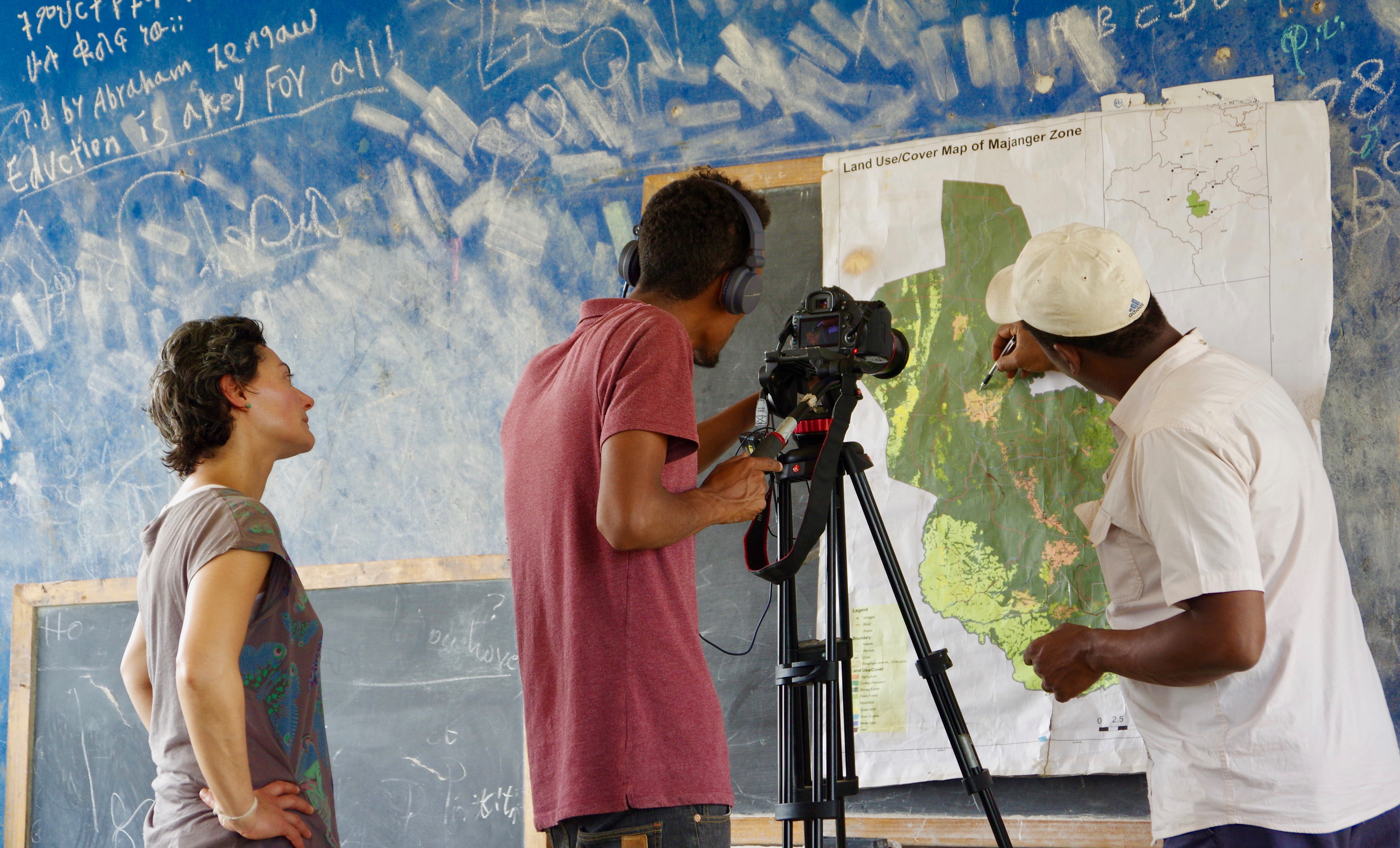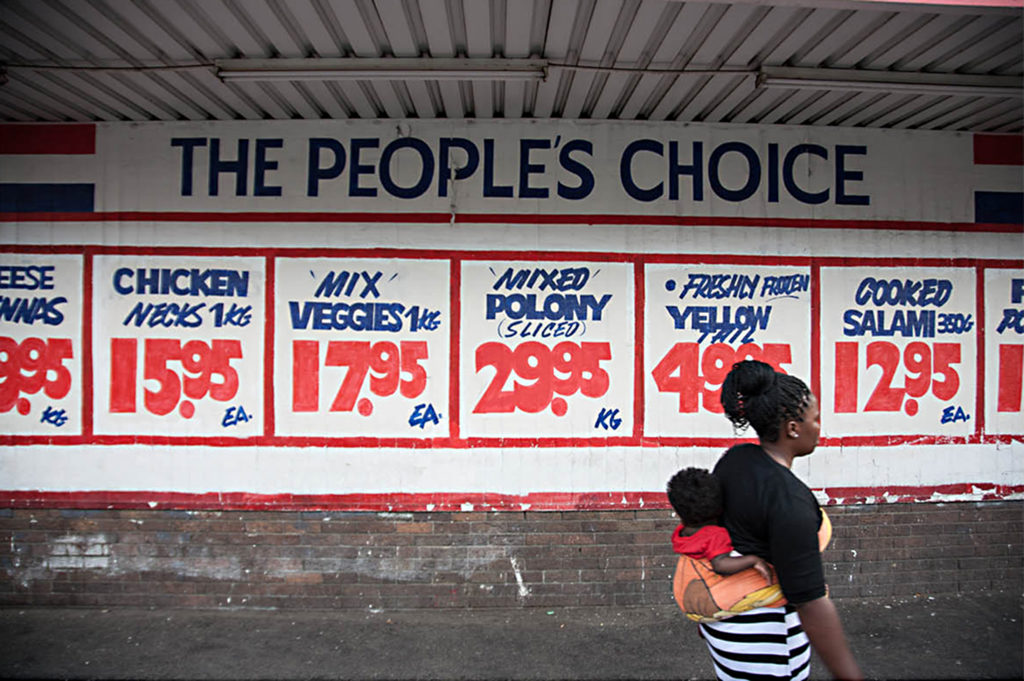 GRAID documentary film coming soon “Majang – cultivating a resilient food future for the people of the forest” Ethiopia’s population is quickly growing, a trend in many African nations. The Ethiopian national government’s agricultural policy is increasingly following a high chemical input model in order to increase crop yields. While agriculture harvests must keep up with the demands of a growing population, it is important to understand the lasting impacts that […]
GRAID documentary film coming soon “Majang – cultivating a resilient food future for the people of the forest” Ethiopia’s population is quickly growing, a trend in many African nations. The Ethiopian national government’s agricultural policy is increasingly following a high chemical input model in order to increase crop yields. While agriculture harvests must keep up with the demands of a growing population, it is important to understand the lasting impacts that […]
Ethiopia’s population is quickly growing, a trend in many African nations. The Ethiopian national government’s agricultural policy is increasingly following a high chemical input model in order to increase crop yields. While agriculture harvests must keep up with the demands of a growing population, it is important to understand the lasting impacts that these chemicals have on the natural environment.
A documentary film about GRAID researcher, Million Belay, gives a flavour of how resilience-oriented research sheds light on the complex, interconnected and wide-ranging social-ecological factors that need to be considered and addressed as part of the design for a sustainable and resilient food production system. He does so by asking the question: How can resilience-based research help to inform the development of food production systems that will deliver enough for everyone to eat, without degrading the environment and eroding culture?
The film’s narrative focuses on resilience research in one community experiencing multiple changes. This community lives in a forested region, and face challenges of population growth and immigration that bring about social and cultural changes. In turn, there are impacts on the environment, as a result of different farming practices and the way the forest is managed.
Using a deeply embodied understanding about his country’s political and cultural history, Belay, an Ethiopian native, uses methods based on a resilience approach to help the community find their own practical solutions to the complex problems they face. For example, he combines local and traditional ecological knowledge, and at the same time, the latest research on global trends in climate change. He places this data alongside current national policy on reforms to agriculture and foreign investments that are driving rapid economic expansion. All the while, he collaborates with the men and women who are part of the research process through participatory methods that create space for shared learning between the researcher and the community. Most importantly, this participatory process helps to build trust, understanding and clarity about steps the community itself can take to determine their future.
The way in which the research is carried out, and the local level outcomes, draw on resilience-oriented research and highlight knowledge and insights relevant far beyond this forest. Furthermore, the project goes some way in translating knowledge into hands-on practical actions that can inform a more sustainable and just development approach.
Synopsis of the film (20 minutes)
Belay takes us on a journey into the thick, low-lying forest of Majang, in southwestern Ethiopia. The area is changing quickly – the land is fertile and attracts business investments in coffee production, as well as settlers migrating from the highland regions of Ethiopia in search of land to clear for agriculture.
Belay is on a scoping mission to find out how the Majang, a community indigenous to Majang forest, are experiencing rapid changes in their social and ecological environments. Belay asks what kind of future they want.
The entry point he chooses is delving into the Majang community’s food production system.
What do the Majang people harvest from the forest? How do they farm? Embedding himself in the community, Belay works closely with elders, men and women. By focusing on food, Belay learns about the connections between the Majang people and the forest that has shaped their identity, culture and source of livelihood.
He discovers that the jang, an area of the Majang forest where bees produce honey, is important to the Majang people for a number of reasons. First, jang is an important part of the Majang peoples’ identity, as it is this specific part of the forest where their name is derived. Second, the honey is highly valued and currently forms an important source of local income. When patches of land are cleared for small-scale, mixed agriculture by the Majang community, they give careful consideration before felling the trees in which the bees build their hives.
However, everything is changing, and there are fewer certainties than ever before. The population is growing, and more forest is being cleared to grow food. At the same time, there are external pressures. Highland communities leave their increasingly arid, degraded and under-productive land and migrate to Majang, where the soil is fertile. Big business is investing in clearing forest for coffee plantations. At the national level, government policy favours high chemical input agriculture and less diversity of crops, which depletes soil quality, risks degrading the ecosystem, and poses potential human health risks. Meanwhile, rising global temperatures influence biophysical forces that shape the region, the African continent and the planet. Shifts in global patterns lead to less rainfall in the region and prolonged droughts.
Belay pulls together insights from resilience thinking as a guide through the complex, entangled, and always-changing dynamics between: humans and environment; the local, national, and global; and the social, political, and biophysical. His goal is to help the Majang people identify what kind of future they want, what kind of support they need, and what actions they can take now.
He uses research methods and approaches to draw out both men’s and women’s knowledge about the place where they live and the values they live by. As an Ethiopian himself, Belay is committed to finding pathways for development before the pressures facing the community and the forest reach breaking point. He strives to enable the community to make decisions about their future. In the end, the community gathers around a shared vision of the transformation they want to see that holds intact their identity as the people of the jang, in the Majang forest.
2018-03-07 In Between: Photos and film on memory, migration and resilience in South AfricaNow more than ever, we are on the move. People from all over are settling in places far from home, often in search of a better life. With migration now so commonplace, it inevitably has influenced our social and economic systems. For example, annual global remittance flows, money sent back home by foreign workers, now […]
In Between: Photos and film on memory, migration and resilience in South AfricaNow more than ever, we are on the move. People from all over are settling in places far from home, often in search of a better life. With migration now so commonplace, it inevitably has influenced our social and economic systems. For example, annual global remittance flows, money sent back home by foreign workers, now […]
Now more than ever, we are on the move. People from all over are settling in places far from home, often in search of a better life. With migration now so commonplace, it inevitably has influenced our social and economic systems.
For example, annual global remittance flows, money sent back home by foreign workers, now exceeds aid funding worldwide ($350 billion versus $130 billion, respectively). Global remittances have become central to questions of global development funding. However, with rising global tensions around migration, many are finding it harder to earn a living abroad. This stress is in turn transferred to communities they support through remittance.
In Between is a mixed collection of film and photography by Luke Metelerkamp, Steve McDonald,and Jules Macer, which explores food economy and culture in Belleville, South Africa, informally dubbed ‘Somali Town.’ Given the pivotal role which the food economy plays in migrants’ livelihood strategies and remittance flows back home, the exhibition uses food as an entry point for an exploration into memory, migration, and resilience. The work raises questions around our understandings of informal livelihoods, and the solidarity economy in the generation of remittance flows that support millions of families globally.

“In Between” uses food as a way to explore memory, migration, and resilience in Somali Town (Belleville, South Africa)
What does food have to do with remittance flows in Africa?
A closer look at the stories about these migrants showcase the interconnectedness and surprising nature that the food economy in Somali Town has on remittance flows all across the continent of Africa and beyond. The narratives personify the links between social tolerance in wealthy economies to the resilience and social wellbeing within regions in crisis. In doing so, the work highlights complex social teleconnections linking some of the wealthiest parts of the continent with the social welfare in some of the least stable and war-torn.
The art-based exploration also suggests that unlike the formal food system, the informal food economy serves as an important social safety net of last-resort for communities in exile. The informal food economy is central to building resilience among highly vulnerable communities in exile and the global social networks they support. Furthermore, the narratives from the exhibition suggest that food can also assist in ameliorating cultural discord in regions where refugees and other migrants settle.
This project was supported by GRAID through the Centre for Complex Systems in Transition (Stellenbosch, South Africa).
